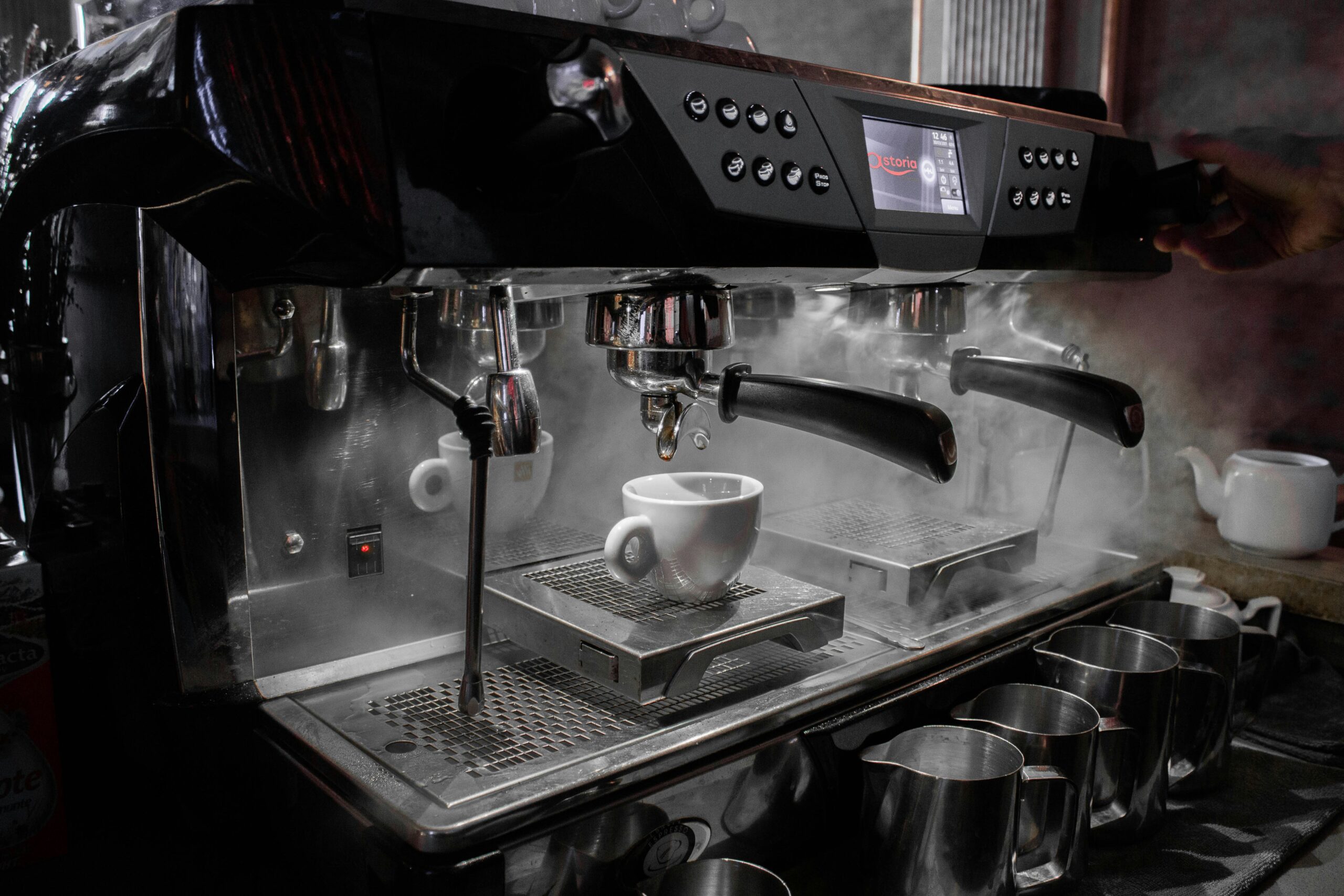
The Perfect Christmas Gifts for Tea & Coffee Lovers | Penningtons Tea & Coffee
Finding the perfect Christmas gift can be tricky but if your loved ones adore great tea or coffee, you’re already

Cleaning your coffee machine might not be the most exciting task on your to-do list, but it’s an important step in ensuring that you brew the perfect cup of coffee every time. A clean coffee machine not only enhances the flavour of your brew but also extends the lifespan of your brewing equipment.
Over time, coffee oils and mineral deposits can build up on your coffee maker, creating stains and producing bitter coffee, leading to a less than ideal coffee experience. With just a little effort you can elevate your coffee brewing process and ensure that your coffee machine is in peak condition, knowing that it is working its best to deliver exceptional flavour.
In this blog, we’ll guide you through the essential steps to coffee machine cleaning and descaling for various types of coffee makers, from coffee pod machines to espresso coffee machines. We’ll explore both the routine maintenance tasks you should perform regularly and the deep cleaning procedures that will eliminate stubborn build up.
When it comes to achieving a clean coffee machine, its essential to understand the difference between coffee machine cleaning and coffee machine descaling, as both processes serve distinct purposes in ensuring your coffee maker operates efficiently.
Cleaning refers to the removal of coffee oils, grounds and other residues that accumulate with regular use. This process typically involves using warm, soapy water or specialised cleaning solutions to wipe down the exterior and interior components of the coffee maker. Regular cleaning helps to prevent buildup and ensures that your coffee tastes its best.
On the other hand, descaling targets mineral deposits which can accumulate in the internal parts of your coffee machine over time. These deposits can hinder the machine’s performance as well as the taste of your brewed coffee. Descaling usually involves using a vinegar solution or commercial descaling solution specifically designed for coffee machines. This process should be performed every few months to maintain optimal performance and extend the life of your machine.
Keep reading to find out how to descale a coffee maker.
Descaling an espresso machine is a crucial maintenance task that helps to ensure optimal performance and the best flavour in your espresso coffee. When descaling espresso machines, ensure the machine is turned off, cooled down and remove the portafilter and any coffee grounds. Prepare a descaling solution by mixing equal parts white vinegar and water or opt for a commercial descaling solution and pour this into the water reservoir of your coffee maker.
Turn on the machine and run the solution through the espresso coffee machine by activating the brew cycle, allowing it to pass through the group head and steam wand. Allow the solution to flow through the machine for about 10-15 seconds, then turn it off and let it sit for about 15-20 minutes to break down the limescale effectively. After descaling espresso machines it’s essential to rinse thoroughly by running several cycles with fresh water through both the group head and steam wand.
To descale a coffee pod machine, you’ll need a pod machine descaling solution or a mixture of equal parts white vinegar and water. Begin by emptying the water reservoir and removing any used coffee pods from the machine. Then, pour the descaling solution into the reservoir.
If your machine has a specific descaling mode, activate it according to the instructions for your machine model. If not, simply run a brewing cycle without a pod in place, allowing the descaling solution to flow through the machine. Once the solution has passed through, let the machine sit for about 15-20 minutes to allow the solution to breakdown any mineral build up.
After the descaling process, rinse the coffee pod machine by running several cycles with fresh water to eliminate any residual solution.
To descale a bean to cup coffee maker you’ll need a descaling solution which can be either a commercial descaler for coffee machines or a mixture of equal parts white vinegar and water. Begin by emptying the water reservoir and remove any coffee beans from the machine. Then, fill the reservoir with the descaling solution.
Many bean to cup coffee makers have a specific descaling mode. Refer to your coffee machine’s manual to activate this mode and follow the instructions to run the descaling cycling. If not, simply run a brewing cycle without the coffee beans, allowing the descaling solution to flow through the machine. After the solution has run through, let the machine sit for about 15-20 minutes to allow the descaling solution to break down any buildup.
Once the descaling cycle is complete, rinse the water reservoir and run several cycles with fresh water to flush out any remaining solution.
In summary, carrying out a regular coffee machine clean keeps your machine free from coffee residues while coffee machine descaling tackles the mineral buildup that can affect its functionality. By incorporating both practices into your coffee machine maintenance routine, you’ll ensure that every cup you brew is delicious but also made with equipment that’s in top condition. No matter your preferred brewing method, whether a cafetière, moka pot or espresso coffee machine, Penningtons flavourful roasted coffee is the perfect pairing.

Finding the perfect Christmas gift can be tricky but if your loved ones adore great tea or coffee, you’re already

Discover how to brew tea perfectly every time with Penningtons’ expert guide to temperatures, timing, and techniques for every blend.